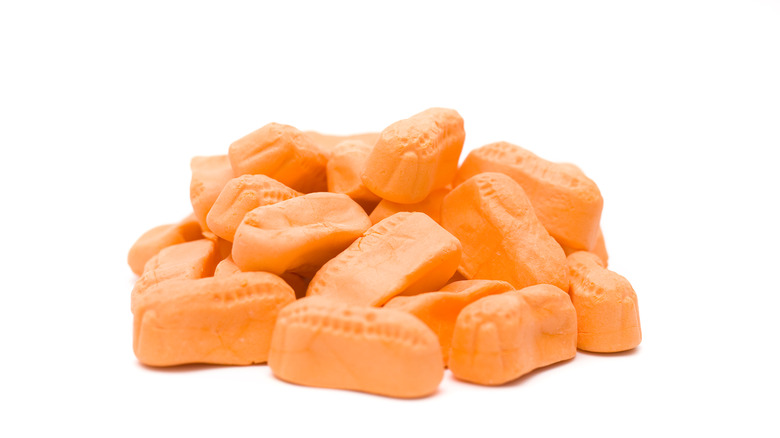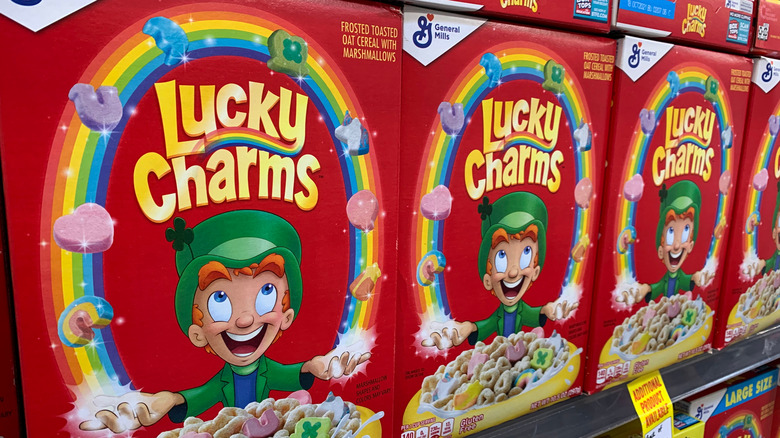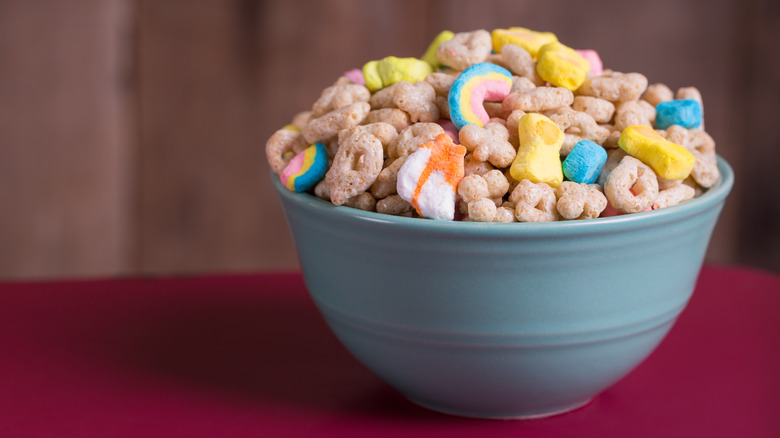How Circus Peanuts Led To The Creation Of Lucky Charms
Aside from possibly candy corn, circus peanuts have to be the American candy that creates the strongest feelings on either side of the love/hate spectrum. Their detractors say the texture is weird; they don't taste like peanuts (they're supposedly banana-flavored). We don't even know where they originally came from, in theory, because no one wants to admit they invented them. Even marshmallow peeps get more love from the public than circus peanuts. Their supporters say they're delicious, which is a fair point regardless of whether it's true.
A product that's a lot less controversial, however, is Lucky Charms. It's the 7th-largest cereal brand in America and possibly the most iconic high-sugar cereal brand (though Cinnamon Toast Crunch fans would disagree). But if you love the little marshmallows in Lucky Charms, you should probably know that you're essentially eating circus peanuts — and that's not an accident, but the actual root of the cereal's creation. Maybe people don't hate circus peanuts so much after all.
The iconic marshmallows in Lucky Charms came from a circus peanut-lover
Few products have as murky a history as circus peanuts. We're pretty sure they originated in the 1800s, making them one of the oldest surviving candies in America. Beyond that, though, we're not sure where they came from — or why they were created in the first place. There's a theory that vendors at traveling circuses who sold both candy and peanuts decided to combine the two, but that's largely a supposition with no hard evidence to back it up. This is very unusual for a food product, even one that's been around for two centuries; generally, we can trace the origins of most food items or dishes to somewhere.
In the early 1960s, General Mills was riding high off the success of Cheerios. They weren't content to rest on their laurels, so they set product developer John Holahan to create a follow-up. Holahan's various ideas used Cheerios as a base, but on a whim, he chopped up some circus peanuts (which happened to be his favorite candy) and tossed them in there. The resulting cereal alchemy was the product we know today.
The secret is in the flavoring
Marshmallows modeled after circus peanuts was a surprisingly prescient move for Lucky Charms. The texture of the peanuts, which so many people find off-putting, was turned into an asset when combined with milk and (essentially) Cheerios. The smart play, though, was the flavoring. Holahan suspected that banana-flavored marshmallows wouldn't capture the public imagination in cereal, instead going with one vanilla flavor but creating the illusion of flavor variety with the brand's iconic variance in shapes and colors. It worked to perfection.
Here's the dirty little secret of cereal creation, though: they all use a single flavor. No matter what colors a cereal like Froot Loops or Fruity Pebbles uses to disguise their nature, all their rings or rainbow cereal chips have the same flavor. It makes sense from both a cost-effectiveness and marketing perspective: more colorful things appeal to kids, and keeping everything the same flavor keeps production costs down.


